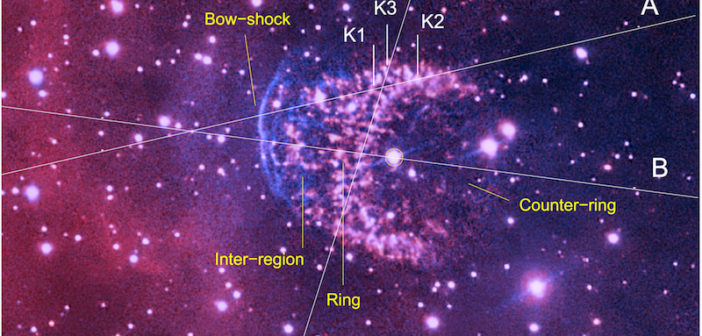New nebulae are being discovered and classified every day — and this false-color image reveals one of the more recent objects of interest. This nebula, IPHASX J210204.7+471015, was recently imaged by the Andalucia Faint Object Spectrograph and Camera mounted on the 2.5-m Nordic Optical Telescope in La Palma, Spain. J210204 was initially identified as a possible planetary nebula — a remnant left behind at the end of a red giant’s lifetime. Based on the above imaging, however, a team of authors led by Martín Guerrero (Institute of Astrophysics of Andalusia, Spain) is arguing that this shell of glowing gas was instead expelled around a classical nova. In a classical nova eruption, a white dwarf and its binary companion come very close together, and mass transfers to form a thin atmosphere of hydrogen around the white dwarf. When this hydrogen suddenly ignites in runaway fusion, this outer atmosphere can be expelled, forming a short-lived nova remnant — which is what Guerrero and collaborators think we’re seeing with J210204. If so, this nebula can reveal information about the nova that caused it. To find out more about what the authors learned from this nebula, check out the paper below.
Citation
Martín A. Guerrero et al 2018 ApJ 857 80. doi:10.3847/1538-4357/aab669


1 Comment
Pingback: AAS a new nebula is imaged